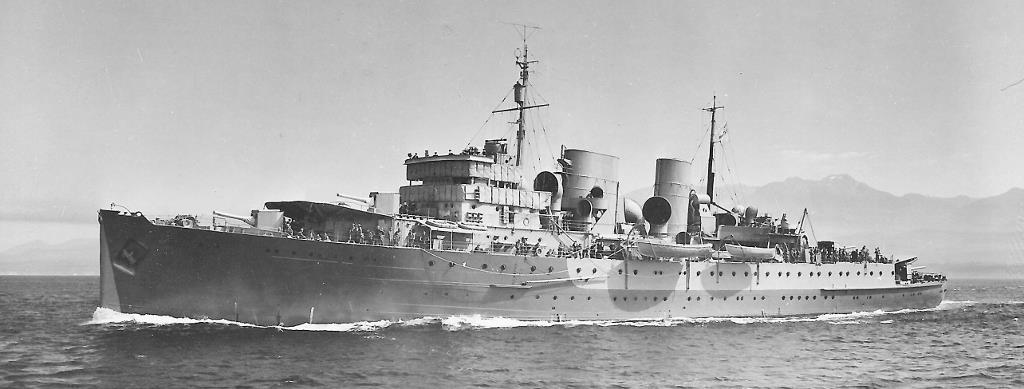The last destroyer design for Antarctica was the Swan class of
1916/17, which finished completion of the class in 1920. The
design process that began in 1918 was to take all the wartime
lessons from the destroyers designed, built and used during the
war, to produce a set of ships that would take the Antarctican
destroyer classes into the future. It was decided that the Hayes
class destroyer leaders should be the start point. The Hayes
class had five 5" guns with the fifth gun between the funnels
which reduced its usefulness. Also the 2 pounder four and eight
gun mountings were under design and trials and the quad mounting
of these weapons would make a good AA weapon for destroyers. It
would take a while before these mountings would get down to
destroyer level with so many large ships in front of them in the
queue.
With 40 ships in the class,
it was felt this would give eight five ship flotillas, that
would provide their own leader. The ships were ordered in groups
of ten. The hull, 360x36 feet (10 to 1 ratio) would remain the
basic hull for the next few classes as different armaments were
placed aboard. The main inter-war changes were the normal
replacement of the single 2 pounder with 20mm cannons and the
single 5" being replaced with dual purpose mountings. A note on
the 5". All of the 5", low angle, removed, were later fitted to
merchant ships for their defensive armaments. Some became
'merchant' cruisers with up to ten 5" being placed aboard and
these ships would be convoy escorts that could rain heavy fire
on any submarine (on the surface) or raider that may attack a
convoy the ship was in.
The class performed very well during that tough first three year
period of the war when everything seemed to be going wrong for
the Allies. These destroyers certainly confirmed the 'maids of
all work' tag. One day they could be guarding the fleet, the
next day they could be detached to aid a convoy in distress.
Fighting enemy light forces or beating off air attacks these
ships did well. Everywhere from the Great Southern Oceans to the
frozen North, these ships sowed their toughness and durability.
The 40mm refits during 1942, concentrated the light AA armament
in one size and two mountings, replacing the 2 pounder and 20mm
cannons previously carried. Radar predictors aided the guns
knockdown capabilities. The class had many losses during the
war, gunfire, bombs, torpedoes, mines, even hurricanes sank
these ships. The end of the war saw the wholesale discarding of
the remaining ships of the class. Being already 20 years old,
none of the countries in the market to buy second hand warships
wanted them.
| Displacement | 1,700 tons standard, 1,950 tons full load | ||
| Length | 359 ft | ||
| Breadth | 36 ft | ||
| Draught | 13 ft | ||
| Machinery | 2 shaft, steam turbines, 40,000shp | ||
| Speed | 35 knots | ||
| Range | 6,000 miles at 10 knots | ||
| Armament | As completed 5 x 5" (5x1) 8 x 2pd (1x4, 4x1) |
Refits to 1940 5 x 5" DP (5x1) 4 x 2pd AA (1x4) 4 x 20mm (4x1) |
Refits to 1942 4 x 5" (4x1) 8 x 40mm (2x4) 2 x Hedgehog |
| Torpedoes | 8 x 21" (2x4) | 8 x 21" (2x4) | 8 x 21" (2x4) |
| Complement | 135 | 140 | 145 |
| Notes | Muller McDonald Lamm Cetera Parazaider Pankow Hermann Knopfler Illsley Withers ---------- Lindes Clark Williams Sonni Fletcher Davies Hodgson Palmer Baker Thomson ---------- Millar Winthrop Currie Farrell Siebenberg Helliwell Hart Verheyen Walsh Hugo ---------- Thornburg Brown Clarke Steele Haydock Rathbone Hicks Elliott Parker Howarth |
||
Armed merchant cruiser with 5" low angle guns forward and aft.

Below is Version 1 of the Muller Class. The hull just does
not suit the period I am aiming for. Though it will make a good
DDE hull for the 1940's.